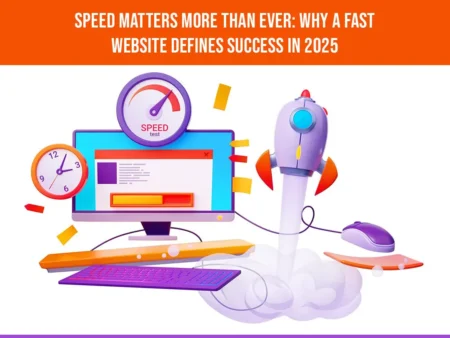
In 2025, the digital landscape will be more competitive and demanding. Shoppers require perfect experiences, and waits of seconds are sufficient to drive away potential customers. Designing websites in Tampa Bay is all about speed if you want websites that convert, attract, and not move away. A slow site alienates users, increases bounce rates, and impacts how search engines perceive and rank your business online. Speed optimization of your site is not only intelligent—it’s success is what makes your brand.
Understanding the Impacts of Website Load Times
Site speed has a direct impact on user joy. Several studies have confirmed that websites lose visitors if they take longer than three seconds to load. Patience is thinning faster still on the mobile phone, where increasingly much browsing is occurring. Each second counts to retain the visitor’s focus. This is not anecdotal. Search engines such as Google utilize page speed as a ranking signal, specifically mobile-first indexing. A slow website damages your ranking in listings, reducing visibility and making it even harder to achieve.
Besides visibility, speed also plays a role in conversions. Shopping sites, for example, have learned they lose up to seven percent of conversions with every one-second delay in page loading. This impact is felt far and wide. Whether you have a site to sell goods, create leads, or simply inform, load time directly impacts its performance.
Reducing Page Weight to Enhance Load Times
One of the simplest methods to speed up a site is to make its pages lean. Today’s websites tend to have high-resolution imagery, animations, videos, and other third-party scripts. These deliver wonderful visual experiences, but they contribute unwanted bloat to the page’s weight and slow it down.
Compression using formats like WebP, reducing custom fonts, and removing unused JavaScript and CSS will save the browser from downloading many resources. Reviewing every page and seeing what one might trim without impacting user experience is wise. All must have some reason to exist.
Utilizing Browser Caching and Content Delivery Networks
Caching saves copies of your site data so returning visitors can access it more quickly. Properly configured browser caching saves locally things like logos, CSS files, and background images, and reduces page render time for repeat visits. It saves the overhead of repeated downloads for repeat visits.
An excellent practice is to employ a Content Delivery Network (CDN). A CDN distributes your site’s content across various server locations globally. When your site is accessed, the content is pulled from the server nearest to the user. This increases speed and allows your site to deal with surges in traffic.
Minimizing Server Response Time
However much you optimize front-end functionality, your hosting configuration controls how fast your site will load. Shared hosting is affordable, but tends to have the drawback of slow response time due to the resources being pooled with other sites.
Investing in quality hosting, tailored to your website’s needs, will reduce downtime and have your server respond to browser requests in real time. Monitoring server performance and using hosts with high uptime histories will rule out slowdowns and downtime that will hurt your reputation.
Mobile Optimization as a Driving Force
As people browse increasingly from handheld devices, it is crucial to make your website friendly to these devices. A well-displayed website on a smartphone or tablet increases usability and helps decrease bounce rates.
Responsive design, which adapts the layout to the screen size, is only part of the solution. Mobile-specific speed optimization also involves maintaining image sizes to fit onto smaller screens, not employing bulky pop-ups, and reducing the overall mobile code. A well-designed, fast-loading mobile site helps build trust and engagement.
Maintaining Pace with Periodic Audits
Optimization is continuous. Websites grow yearly, and adding fresh content, plugins, and widgets slows down a formerly fast site. Periodic performance tests with Google PageSpeed Insights or GTmetrix allow you to see and quickly fix new slowdowns. Periodic updates, security updates, and housekeeping tasks like database optimization keep your site lean and spry.
Stay Competitive by Staying Nimble
In today’s age of shorter human attention spans, speed on the site is functional and perceptual. If you’re going to rebrand your web presence or build a new website in Tampa Bay, speed has to rank at the top of your agenda. A fast site enhances user experience, increases your ranking, and accomplishes your business’s long-term goals.
For companies prepared to improve their web performance, Alphabet Marketing provides customized solutions that emphasize quick, stylish, and effective digital design.
Picture Credit: Freepik
